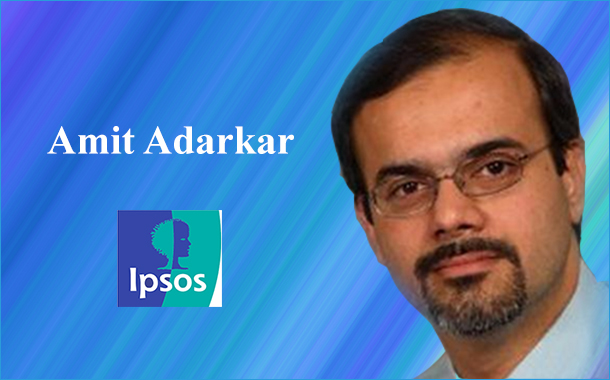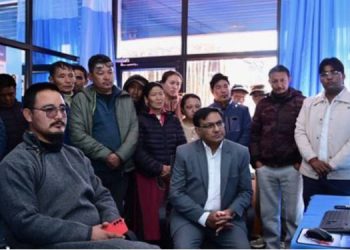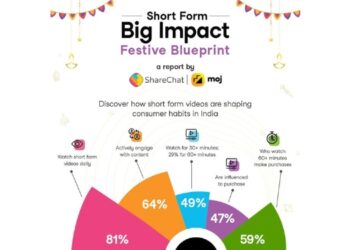India is well-known as the world’s largest democracy, one of the world’s fastest-growing economies, and a young nation set to reap demographic dividends over the next few decades. What is not so well known is its unprecedented pace and scale of digital adoption
This is being driven by a near-perfect confluence of supply factors (falling bandwidth prices, low mobile device prices, rapid rollout of 4G, aggressive nativization of mobile technology) and demand factors (rapidly rising affluence, fast mobile technology adoption across demography, mobile technology catering to a large population who have previously had poor opportunities to connect with each other efficiently and effectively). This rapid digital adoption is driving a “mobile-first” ecosystem, with mobile at its heart. Coupled with India’s track record in jugaad (or frugal) innovation, digital adoption has the potential to create massive disruption in consumption.
Mobile and thrift
To understand better the ramifications of “mobile first”, we must consider India from a cultural perspective. Indians have always been accustomed to joint or extended nuclear families. Though urbanization has impacted it, the average family size continues to be around 5.5. Historically, a large population living at sustenance or sub-sustenance levels has given rise to the famous Indian “thrifty gene” – Indians tend to be extremely value-conscious. We like to evaluate, try, compare and share.
How does an inexpensive mobile device with cheap or unlimited data leverage this frugal legacy mindset? Well, mobile is both a social enabler and yet very personal. You have all the information, prices and connections available, right at your fingertips. Our research shows that across both demographics and the urban-rural divide, mobile allows consumers to stay connected with the world all the time, but in an intimate way. You can remain in a large joint family, and yet create your own virtual space using the device in your hands. It is no wonder that Indians spend much more time than average with their handsets.
Mobile, to many Indians, is not just a device to communicate, but their first and only window to the external world – their first and only window to express their individuality. Mobile allows them to do activities which they could not do freely in the cultural context (express opinions openly, date, buy lingerie, have intimate conversations). Mobile also satisfies the thrifty gene – it allows people to compare prices, read reviews, hunt for sales and discounts, pay cash on delivery and avail of goods returns policies. Mobile technology and digitization have hugely influenced consumers’ system behaviour and decision-making.
A different kind of consumer
Are businesses tapping into this massive opportunity? There are many obvious examples, including social media networks, e-commerce platforms and shared mobility apps, of companies that have managed to harvest and leverage the mobile-first phenomenon. But this is only the tip of the iceberg. A large part of India’s consumption is through traditional business delivered using bricks and mortar channels. This is where the next disruption is likely to occur. It is easy for an e-commerce or shared mobility company to leverage mobile, but it is much tougher for a fast-moving consumer goods company (FMCG) or automotive behemoth to change their business models to harness mobile-first.
These businesses will have to come to terms with some harsh realities. Increasing mobile internet penetration is narrowing the information divide between rural and urban consumers. The erstwhile urban-rural paradigm may no longer be the most accurate lens through which to assess growing consumption aspirations and preferences across India. By 2030, the country have more than one billion internet users, nearly all going online primarily through mobile phones. They will begin earning, spending on themselves and actively engaging with mobile technology-enabled consumption models.
These consumers will also be more informed than ever before, having had higher exposure to local and global brands, as well as access to internet and smartphones in their formative years. Obviously, income levels will dictate the size and composition of their consumption basket, but the more educated and technology-savvy consumers in each income segment will drive the most significant consumption opportunities across segments.
Consumers will exhibit more mobile consumption (on-the-go) as well as experiential consumption (products as a service). The role of the point of sale will transform, as consumers search online before purchasing. Businesses will need to match the level of transparency demanded by price-sensitive, connected consumers who compare and critique in real time. Mobile-first will unlock opportunities for location-based targeting, which offers understanding of cross-platform shopping behaviour at a scale unmatched elsewhere in the world.
Necessary disruption
This is a wake-up call for corporates. Mobile and digital technologies are now part of the very fabric of the world in which we live. We can’t afford to overlook the influence of technology on our ability to reach and serve customers, and on our operational delivery. Organizations will have to disrupt themselves, whether they like it or not. They must revisit their consumers’ aspirations, experiences and journeys, and redefine their business models to reach and engage target audiences.
The strategies of the past will no longer be relevant. In order to be successful in today’s constantly changing world, corporates need to evolve their strategies and business models, turning consumers’ mobile dependence from a risk into an opportunity. The next innovations in the consumer space will not necessarily be product innovations, but innovations around the entire product, service, and experience offering, or around product and distribution.
There is going to be a big transformation in our production, distribution, and consumption systems. There is no escape from having to embrace game-changing technologies, such as artificial intelligence (AI), the Internet of Things (IoT), autonomous vehicles, drones and robotics, and managing the massive transformation of business and operating models that will ensue. Exciting times are ahead.
Written by:
Amit Adarkar, Managing Director and Country Head, Ipsos India
This article is part of the World Economic Forum Annual Meeting

















